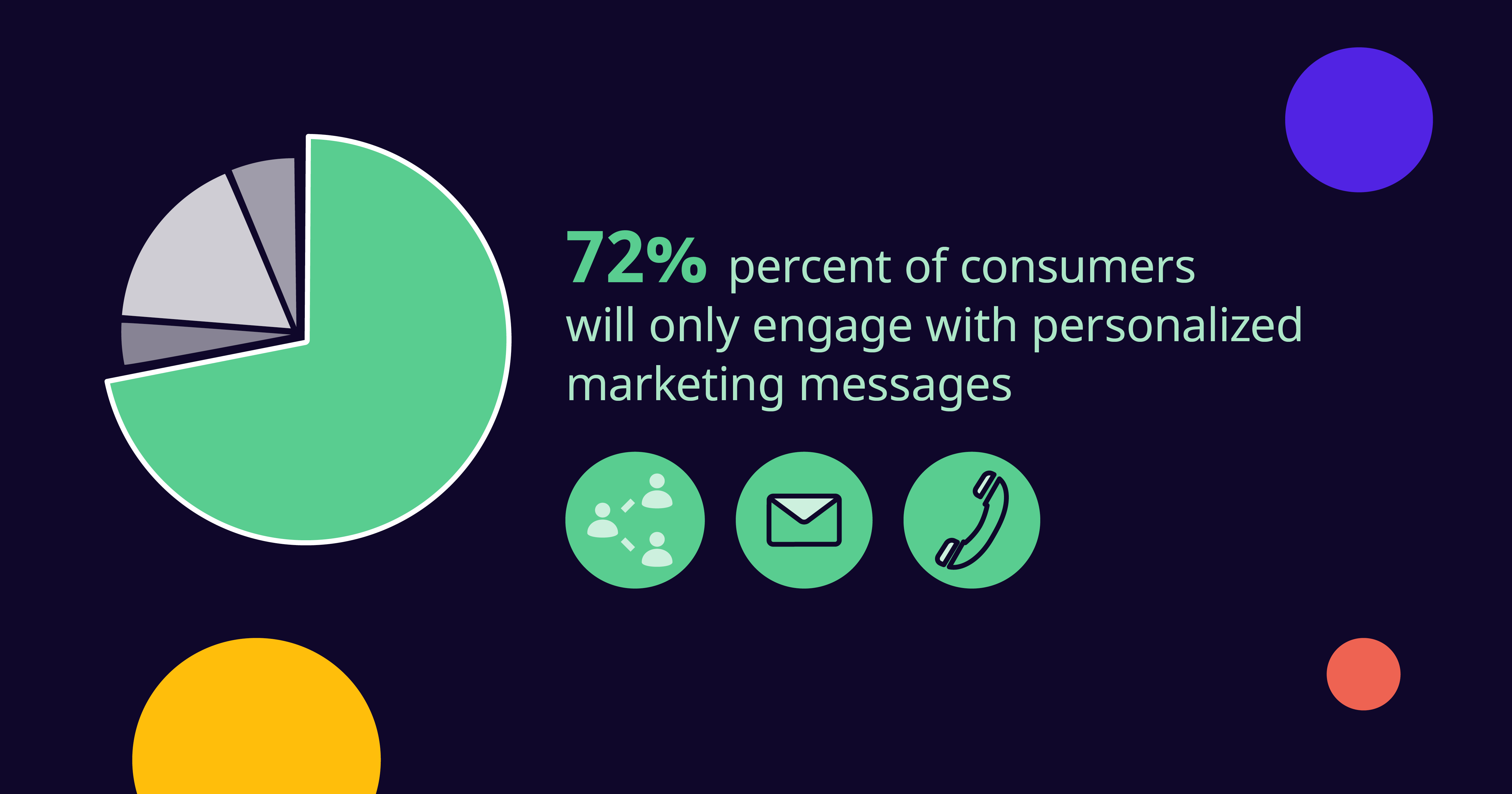Customers expect relevant communication. Each customer that makes up a brand’s customer base is a unique individual with various needs, expectations and pain points. To effectively communicate and support them, organizations must acknowledge their diversity, and act accordingly.
Customer segmentation refers to the process of dividing customers into subgroups based on similar characteristics and variables such as demographics, interests and behavior. Doing this enables companies to tailor and personalize campaigns to unlock new competitive advantages and boost satisfaction, loyalty and ROI, among other benefits.
Segmentation is a good first step on the journey of relevance, but it is almost never flexible enough to meet the needs of customer communication, and consequently the needs of the customer.
The current state of customer segmentation
According to research, 91% of consumers are more likely to purchase from brands that recognize, remember, and provide them with relevant offers and recommendations. Failure to utilize all of the granular data available to them, or to be agile enough to do on-demand segmentation that facilitates diverse campaigns, means companies don’t understand who their customers really are. Consequently, they are unable to truly personalize offers to build relevant connections.
To combat this, many firms segment individuals into broad groups based on high-level data such as shared interests and demographics.
Many brands go further than this, working to create microsegments for more surgical control.
However there are two fundamental problems that are common across most segmentation approaches, no matter how granular.
- Businesses aren’t using the behavioral data that would allow them to truly take into account their customers’ unique drivers, affinities and behaviors. Telcos, in particular, have access to a wealth of first-party customer data that is too often going unused. This puts them in a unique position to benefit from dynamic customer segmentation by leveraging insights about their customers’ behavior, rather than just relying on what they find stored in their CRM or billing data.
- Segmentation simply takes too much time to create, quickly becomes obsolete and is almost never a perfect fit for any future communications strategy, the requirements of which are often not known at the time that the segmentation exercise happens
If a firm could deploy a dynamic segmentation capability that uses the most relevant data while being able to segment, subsegment and resegment in the moment with the latest criteria, both of these problems could be eliminated. Firms could deliver an ROI that is an order of magnitude higher than traditional segmentation efforts.
However, putting this into practice is the challenging part. Much of this data needs to be made privacy-safe, semantically understood and validated. Then you need the tooling to create reliable, accurate, relevant segments in hours or days rather than weeks or months.
If you are armed with the right tools, such as Intent HQ offer, firms can overcome the challenges they face in delivering relevant marketing to high volumes of customers.
The issue with mass targeting
Segmentation is effective when each segment is clearly defined and distinguished from one another, but most importantly, optimized for the communications and offers you want to make. Creating broad, general-purpose segmentation models often means companies miss out on the benefits that come with taking a more sophisticated and dynamic approach.
Often, companies are not armed with the resources, manpower or time required to do the qualitative analysis necessary to develop customer segmentation models that are agile enough to give them the edge they need in today’s saturated market.
For instance, if a firm comes up with 20 different segments, much of their valuable information is likely to get lost in the process. Moreover, static customer segments often lead to individuals remaining where they are. This becomes problematic when considering the diverse nature of an organization’s user base. What if the customer in question could fit into more than one segment, or the segment they’re in isn’t relevant to specific campaigns? How might you reallocate the customers in an irrelevant segment to another one? The best method of targeting one person in a particular segment may not be the same as for another, which is why it’s crucial to know what motivates them as individuals – not simply as part of a broad customer segment.
Static segmentation leads to certain constraints for a business to work within, preventing the customer from belonging to multiple segments or moving between them fluidly. Instead. However creating dynamic and agile customer segmentation models that are adaptive to campaigns and tailored to the specific interests and behaviors of your user base increases the chance of conversion by allowing you to deliver truly personalized experiences.
The importance of rich behavioral data for dynamic customer segmentation
The type of information that is often ignored is rich behavioral data which includes insights that detail how your customers consume the service you provide, how they use their devices, the depth of their engagement, the context in which it takes place, their voice profiles and so on.
Using this type of data goes beyond creating discrete segments to allow companies to understand and pinpoint the seeds of behavioral differences. Then, they can expand on those seeds to meet the needs of different use cases and get much more out of the data they have access to.
In the current business landscape, there is a growing need for businesses to be more dynamic when building customer segments on a case-by-case basis and deciding, dynamically, who belongs in which segment at any particular time. How you populate segments at the point of need is what will set you apart from competitors and allow you to deliver personalized marketing and highly relevant messaging that targets the right customers at the right time.
For companies to embrace segmentation and tap into the power of true personalization, they must move beyond basic models to those that deepen their understanding of and relationships with customers.
Find out more about how Audience AI can transform your customer segmentation strategy.




